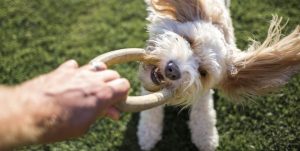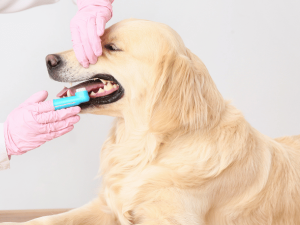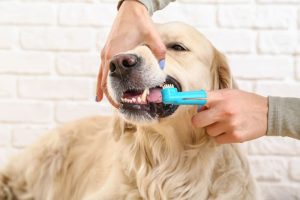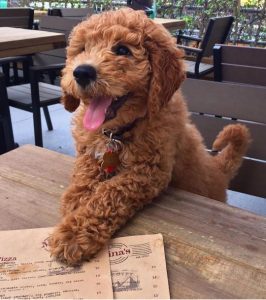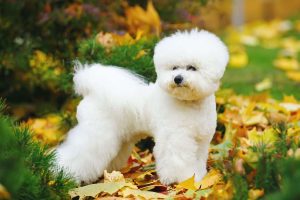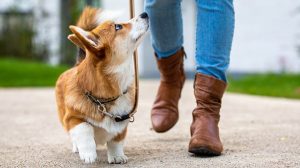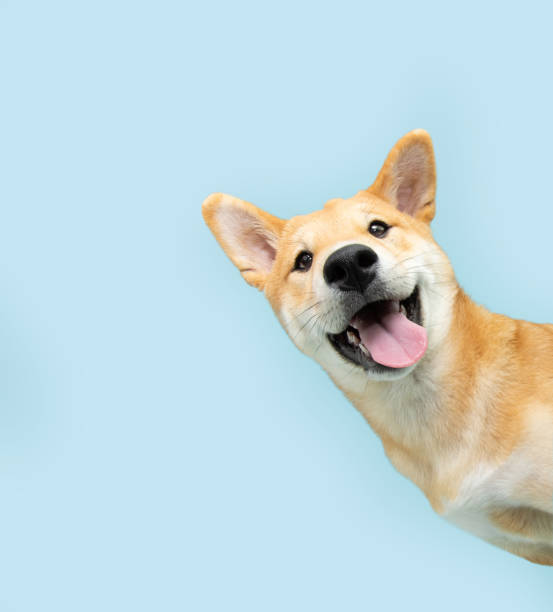Hey there, dog lovers! Have you ever found yourself daydreaming about the pitter-patter of paws in your home, the warmth of a furry friend curled up beside you, or the joy of daily walks with a loyal companion? If so, you’re in the right place. Welcome to our guide on choosing the perfect dog breed for your lifestyle!

We all know that bringing a dog into our lives is a big decision—one that comes with plenty of love, laughter, and, of course, responsibility. But with so many adorable breeds out there, each with its own unique traits and characteristics, how do you know which one is the best fit for you?
That’s where we come in. In this guide, we’ll walk you through the process of finding the canine companion of your dreams. From considering your lifestyle and preferences to researching breeds and meeting potential furry friends, we’ve got you covered every step of the way.
So, whether you’re a seasoned dog owner looking to add another pup to your pack or a first-time pet parent eager to embark on this exciting journey, let’s dive in and discover the perfect match for your lifestyle. Because when it comes to choosing the right dog, there’s no one-size-fits-all answer—just plenty of wagging tails and unconditional love waiting to brighten your days.
Ready to find your furry soulmate? Let’s get started!

Assessing Your Lifestyle: Finding the Perfect Fit
Before you start browsing through adorable puppy pictures or falling in love with the idea of having a furry friend by your side, let’s take a moment to assess your lifestyle. Just like finding the right pair of shoes or the perfect cup of coffee, choosing the right dog breed requires a good understanding of your own preferences, habits, and commitments.
1. Work Schedule and Commitments
Think about your daily routine. Do you work long hours away from home, or are you lucky enough to have a flexible schedule? Dogs, like us, thrive on routine and companionship. Consider how much time you can realistically dedicate to your furry friend each day.
2. Living Space
Whether you reside in a cozy apartment in the city or a spacious house in the suburbs, your living space will play a significant role in determining the type of dog that fits best. Some breeds are better suited to apartment living, while others require more room to roam and play.
3. Activity Level
Are you an avid runner who loves hitting the trails every morning, or do you prefer leisurely strolls around the neighborhood? Your activity level will influence the type of dog that meshes well with your lifestyle. High-energy breeds may thrive with active owners, while more laid-back dogs might be content with shorter walks and play sessions.
4. Family Dynamics
Consider your family situation. Are you single and living alone, or do you have a bustling household with kids and other pets? Some breeds are known for their patience and gentleness with children, while others may be more reserved or require extra socialization.
5. Honest Assessment
Now, be honest with yourself. It’s essential to recognize both your strengths and limitations when it comes to caring for a dog. Owning a dog is a long-term commitment, so make sure you’re prepared for the responsibility and dedication it entails.
By taking the time to evaluate your lifestyle and preferences, you’ll be better equipped to choose a dog breed that complements your daily routine and brings joy and fulfillment to your life. So, grab a pen and paper, pour yourself a cup of coffee, and let’s dive into this exciting journey of finding the perfect furry companion!
Identifying Your Needs and Preferences

When it comes to selecting the perfect canine companion, it’s essential to consider your individual needs and preferences. After all, you’re not just choosing a pet; you’re welcoming a new member into your family. Here’s how to identify what matters most to you:
1.Size Matters
Size is often one of the first factors that come to mind when choosing a dog breed. Do you prefer a small, compact pooch you can cuddle with on the couch, or are you more drawn to larger breeds that can keep up with your active lifestyle? Consider your living space and personal preferences when determining the ideal size for your new furry friend.
2. Energy Level
Every dog has its own unique energy level, ranging from couch potato to perpetual motion machine. Think about your activity level and lifestyle. Are you looking for a jogging buddy to accompany you on outdoor adventures, or do you prefer a more laid-back companion who enjoys lounging by your side? Matching your dog’s energy level to yours is key to ensuring a harmonious relationship.
3. Grooming Requirements
Some dogs require regular grooming to keep their coats in tip-top shape, while others have low-maintenance grooming needs. Consider how much time and effort you’re willing to dedicate to grooming. Are you prepared to schedule regular grooming appointments, or do you prefer a breed with a wash-and-wear coat?
4. Temperament
Temperament plays a significant role in determining whether a particular breed is the right fit for your lifestyle. Are you looking for a loyal and protective guardian, a playful and outgoing companion, or a calm and gentle lap dog? Understanding your own personality and preferences can help guide you toward breeds with compatible temperaments.
5. Compatibility is Key
Ultimately, the key to a successful partnership between you and your dog lies in compatibility. Take the time to research different breeds and their characteristics thoroughly. Consider how well each breed aligns with your lifestyle, preferences, and expectations. By choosing a breed that complements your lifestyle and personality, you’ll set yourself up for a lifetime of happiness and companionship.
Researching Dog Breeds: Your Guide to Informed Decision-Making
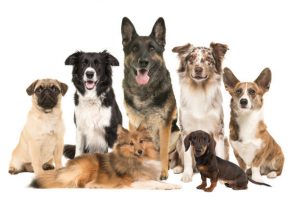
Before making a decision on which dog breed is right for you, it’s crucial to conduct thorough research. Here’s how to gather the information you need:
1. Online Resources
The internet is a treasure trove of information when it comes to researching dog breeds. Visit reputable websites dedicated to dogs and dog breeds, such as the American Kennel Club (AKC) and the Kennel Club (UK). These sites provide detailed breed profiles, including temperament, exercise requirements, grooming needs, and potential health issues. Additionally, online forums and social media groups can offer valuable insights from experienced dog owners and breed enthusiasts.
2. Books and Publications
Consider investing in books and publications that focus on dog breeds. Look for comprehensive guides that cover a wide range of breeds, as well as breed-specific books that delve deeper into the characteristics of individual breeds. Visit your local library or bookstore to browse their selection, or explore e-books and audiobooks for convenient access to valuable information.
3. Breed Clubs and Organizations
Breed clubs and organizations are excellent resources for learning about specific dog breeds. These groups often provide educational materials, breed standards, breeder directories, and opportunities to connect with breed enthusiasts and experts. Joining a breed club or attending breed-specific events, such as dog shows and meet-and-greets, can give you firsthand experience with different breeds and help you make informed decisions.
4. Understanding Breed-Specific Traits
As you research dog breeds, pay close attention to breed-specific traits, including temperament, exercise needs, grooming requirements, and common behavioral tendencies. Consider how these traits align with your lifestyle, preferences, and expectations. Keep in mind that while breed characteristics provide valuable insights, individual dogs may vary in temperament and behavior based on factors such as socialization, training, and genetics.
5. Seek Professional Advice
Don’t hesitate to seek advice from professionals, such as veterinarians, dog trainers, and experienced breeders. These experts can offer personalized guidance based on your specific circumstances and help you navigate the complexities of choosing the right dog breed for your lifestyle. Additionally, consider reaching out to current dog owners of the breeds you’re interested in to gain firsthand insights into their experiences and recommendations.
Matching Breed Characteristics with Lifestyle: Finding Your Perfect Canine Companion
When it comes to choosing the right dog breed for your lifestyle, it’s essential to consider how the breed’s characteristics align with your daily routine and preferences. Here’s a breakdown of dog breeds and their suitability for different lifestyles:
1. Apartment Living
For individuals or families living in apartments or small spaces, certain dog breeds are better suited to thrive in limited living quarters. Consider breeds that are:
- Small to medium-sized
- Low to moderate energy levels
- Minimal shedding
- Quiet and well-mannered indoors
Examples of dog breeds suitable for apartment living include:
- French Bulldog
- Cavalier King Charles Spaniel
- Shih Tzu
- Pomeranian
2. Outdoor Enthusiasts
If you lead an active lifestyle and enjoy spending time outdoors, you’ll want a dog breed that can keep up with your adventures. Look for breeds that are:
- Energetic and athletic
- Well-suited for hiking, running, or outdoor activities
- Weather-resistant coats for various climates
Examples of dog breeds ideal for outdoor enthusiasts include:
- Labrador Retrievers
- Australian Shepherd
- Border Collie
- Siberian Huskies
3. Families with Children
Families with children require a dog breed that is gentle, patient, and tolerant of young ones’ antics. Look for breeds that are:
- Friendly and sociable
- Good with children of all ages
- Patient and even-tempered
Examples of dog breeds well-suited for families with children include:
- Golden Retrievers
- Labrador Retrievers
- Beagles
- Boxers
4. Seniors

For seniors looking for companionship and a furry friend to share their golden years, certain dog breeds are excellent choices. Consider breeds that are:
- Calm and easygoing
- Low energy and less demanding in terms of exercise
- Affectionate and loyal
Examples of dog breeds suitable for seniors include:
- Cavalier King Charles Spaniel
- Bichon Frise
- Maltese
- Pug
By matching breed characteristics with your lifestyle and preferences, you can find the perfect canine companion to enrich your life and bring joy to your home. Remember to consider factors such as size, energy level, temperament, and grooming requirements when selecting the right dog breed for you and your family.
Considering Adoption vs. Buying: Making an Informed Decision
When it comes to bringing a dog into your life, one of the first decisions you’ll need to make is whether to adopt from a shelter or rescue organization or to purchase from a breeder. Here’s a breakdown of the considerations for each option:
1. Adoption
Benefits of Adoption:
- Saving Lives : By adopting from a shelter or rescue organization, you’re giving a dog a second chance at life. Many animals in shelters are in need of loving homes, and adopting from these facilities helps reduce overcrowding and euthanasia rates.
- Supporting Animal Welfare: Adoption supports the efforts of shelters and rescue organizations dedicated to caring for and rehoming homeless pets. By adopting, you’re contributing to the welfare of animals in need and helping to promote responsible pet ownership.
- Variety of Options: Shelters and rescue organizations often have a wide variety of dogs available for adoption, including mixed breeds and purebreds. You’ll have the opportunity to find a dog that matches your lifestyle and preferences while also making a positive impact on the animal community.
2. Buying
Benefits of Buying:
- Predictability: When purchasing a dog from a reputable breeder, you may have more predictability in terms of the dog’s breed, lineage, and health history. Breeders often provide documentation and health guarantees for their puppies, offering peace of mind to prospective owners.
- Specific Breeds: If you have your heart set on a specific breed or have specific requirements for size, temperament, or activity level, buying from a breeder may be the best option. Breeders specialize in producing dogs with desired traits, allowing you to find a dog that meets your preferences.
- Supporting Responsible Breeding: Reputable breeders adhere to ethical breeding practices and prioritize the health and well-being of their dogs. By purchasing from a responsible breeder, you’re supporting efforts to maintain breed standards and preserve the integrity of purebred dogs.
Making the Decision:
Ultimately, whether to adopt or buy a dog depends on your individual preferences, lifestyle, and circumstances. Both options have their merits, and the most important thing is to provide a loving and caring home for your new canine companion. Regardless of your choice, remember that bringing a dog into your life is a long-term commitment that requires careful consideration and dedication.
Meeting Potential Breeds: Exploring Your Options
When it comes to choosing the right dog breed for your lifestyle, meeting and interacting with different breeds is key to making an informed decision. Here’s how you can go about it:
1. Visit Dog Shows and Events:
- Dog Shows: Dog shows are excellent venues to observe various breeds up close and learn about their characteristics, temperaments, and grooming requirements. Attend local or regional dog shows to see different breeds in action and speak with knowledgeable breeders and handlers.
- Breed-Specific Events: Many breed clubs and organizations host events specifically tailored to certain breeds. These events often include breed showcases, obedience trials, and agility competitions where you can interact with dogs and their owners, ask questions, and gather insights about specific breeds.
2. Contact Breeders and Owners:
- Breeders: Reach out to reputable breeders of the breeds you’re interested in and inquire about opportunities to meet their dogs. Responsible breeders are often happy to arrange visits to their facilities or provide referrals to meet their dogs in person.
- Owners: Connect with current owners of the breeds you’re considering and ask if you can spend time with their dogs. Arrange playdates or outings with owners and their dogs to observe their behavior, temperament, and compatibility with your lifestyle.
3. Visit Shelters and Rescues:
- Shelters: If you’re considering adopting a mixed breed or a specific breed available at shelters, visiting local animal shelters and rescue organizations is a great way to meet dogs in need of homes. Spend time interacting with the dogs, getting to know their personalities, and assessing their suitability for your lifestyle.
Tips for Meeting Breeds:
- Ask Questions: Don’t hesitate to ask breeders, owners, and shelter staff questions about the breeds you’re interested in. Inquire about temperament, exercise needs, grooming requirements, and any breed-specific traits or considerations.
- Observe Behavior: Take note of how different breeds interact with people and other dogs. Pay attention to their energy levels, sociability, and any breed-specific behaviors that may influence your decision.
- Take Your Time: Meeting potential breeds is an important step in the decision-making process. Take your time to gather information, observe different breeds in various settings, and consider how they fit with your lifestyle and preferences.
Consulting with Professionals: Expert Guidance for Informed Decisions
When it comes to selecting the perfect dog breed for your lifestyle, seeking advice from professionals such as veterinarians, trainers, or breed experts can provide invaluable insights. Here’s why consulting with these professionals is essential:
1. Veterinarians:
- Health Considerations: Veterinarians can offer guidance on health considerations associated with different breeds, including genetic predispositions to certain medical conditions, exercise requirements, and nutritional needs.
- Behavioral Advice: Veterinarians can provide insights into breed-specific behaviors and temperaments, helping you understand the characteristics and traits of different breeds and how they may align with your lifestyle.
2. Trainers:
- Training Recommendations: Professional dog trainers can offer advice on training methods and techniques tailored to specific breeds. They can help you understand the training needs and behavioral quirks of different breeds, facilitating a harmonious relationship between you and your future canine companion.
- Behavioral Assessment: Trainers can assess your lifestyle and preferences and recommend breeds that are compatible with your personality, activity level, and living situation. They can also provide guidance on socialization, obedience training, and managing any behavioral challenges that may arise.
3. Breed Experts:
- Breed-Specific Insights: Breed experts, including reputable breeders, breed club representatives, and canine enthusiasts, possess in-depth knowledge of particular breeds. They can offer firsthand experiences, insights, and recommendations based on their expertise and familiarity with breed standards and characteristics.
Tips for Consultations:
- Prepare Questions: Before meeting with professionals, prepare a list of questions to ask about breed suitability, health considerations, temperament, and training needs. Be sure to inquire about any specific concerns or preferences you have regarding potential breeds.
- Gather Information: Take notes during consultations and gather information about different breeds, including their history, physical traits, behavior tendencies, and care requirements. Consider how each breed aligns with your lifestyle, preferences, and expectations.
By consulting with professionals who specialize in dog health, behavior, and breed-specific knowledge, you can make a well-informed decision when choosing the right dog breed for your lifestyle. Their expertise and guidance will empower you to select a breed that not only meets your needs but also enriches your life for years to come.
Making an Informed Decision: The Key to Choosing the Right Dog Breed
When it comes to selecting the perfect dog breed for your lifestyle, it’s crucial to take your time and make an informed decision. Here’s why:
1. Research and Assessment:
- Thorough Consideration: Encourage readers to thoroughly research and assess their lifestyle, considering factors such as living space, activity level, family dynamics, and personal preferences. By understanding their own needs and preferences, they can narrow down their options and focus on breeds that are most suitable for them.
- Exploring Options: Suggest exploring a variety of dog breeds and learning about their characteristics, temperaments, exercise requirements, grooming needs, and potential health concerns. This broadens their knowledge base and allows them to make comparisons to find the best match for their lifestyle.
2. Professional Consultations:
- Seeking Expert Advice: Remind readers of the importance of consulting with professionals such as veterinarians, trainers, and breed experts for personalized guidance and insights. These professionals can offer valuable advice based on their expertise and experience, helping readers make well-informed decisions that align with their lifestyle and preferences.
3. Commitment and Patience:
- Significant Commitment: Emphasize that choosing the right dog breed is a significant commitment that requires careful consideration and planning. It’s essential for readers to understand the responsibilities involved in dog ownership, including providing proper care, training, and companionship for their canine companion.
- Avoiding Rushed Decisions : Advise readers to avoid making hasty decisions and to resist the temptation to impulsively choose a breed without proper research and evaluation. Taking the time to weigh all factors and gather relevant information ensures that they select a breed that fits seamlessly into their lives and brings them joy for years to come.
Conclusion: Finding the Perfect Canine Companion
As we wrap up our exploration of choosing the right dog breed for your lifestyle, it’s essential to recap the key points and reinforce the importance of making a well-informed decision:
1. Thorough Research and Assessment:
- We’ve emphasized the significance of thoroughly researching and assessing your lifestyle, considering factors such as living space, activity level, family dynamics, and personal preferences. Understanding your needs and preferences is the first step toward finding the perfect match.
2.Professional Guidance:
- Seeking advice from professionals such as veterinarians, trainers, and breed experts can provide valuable insights and guidance tailored to your specific circumstances. Their expertise can help you navigate the vast array of dog breeds and make an informed decision that aligns with your lifestyle and preferences.
3. Commitment and Patience:
- Choosing the right dog breed is a significant commitment that requires careful consideration and planning. It’s essential to avoid rushed decisions and take the time to weigh all factors, ensuring that you select a breed that fits seamlessly into your life and brings you joy for years to come.
4. Embarking on the Journey:
- With the knowledge and insights gained from our discussion, we encourage you to embark on your journey of finding the perfect canine companion for your lifestyle. Whether you’re considering adopting or purchasing a dog from a breeder, remember to prioritize compatibility and ensure that your chosen breed enriches your life in meaningful ways.
In conclusion, selecting the right dog breed involves careful consideration, research, and planning. By taking the time to assess your lifestyle, seek professional guidance, and remain patient throughout the process, you’ll be well-equipped to make a decision that leads to a rewarding and fulfilling relationship with your canine companion. We wish you the best of luck on your journey of finding the perfect furry friend!



